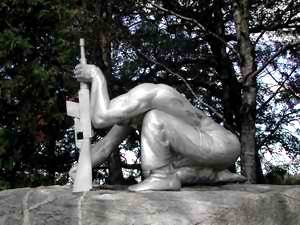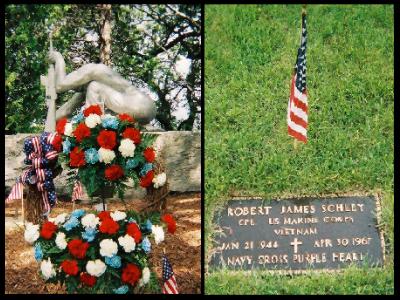Robert James SchleyCorporalM CO, 3RD BN, 3RD MARINES, 3RD MARDIV United States Marine Corps 21 January 1944 - 30 April 1967 Oregon, Wisconsin Panel 18E Line 128 |
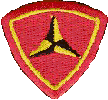
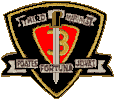
| |
 
|
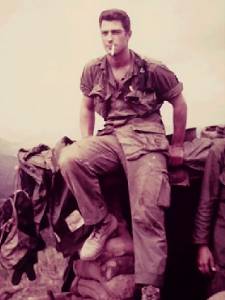
|
The database page for Robert James Schley
|
Larry Jones alluded to this remembrance of our fallen brother Robert J. Schley in Bob's hometown of Fitchburg, Wisconsin. Indications are that his parents are still living in Oregon, Wisconsin. They are in their 80's.
We remember you, Robert ... Semper Fi
From a fellow veteran, |
|
Bob, you where only in my life for a brief moment but it will last a life time.
I miss you every day, you will be in my heart forever.
From a friend, |
|
|
I am honored and privileged to be asked to help your community and the Schley family in remembering my fallen brother Corporal Robert James Schley. As a hospital corpsman I served alongside Bob Schley with 3rd Battalion 3rd Marine Regiment 3rd Marine Division in Quang Tri Province South Vietnam from 1966 until 1967. Our company was on an ill-fated operation behind the aptly named chunk of granite called the Razorback in December 1966. The Razorback loomed out of the triple canopy jungles just south of the Demilitarized Zone straddled by fingers of the Ho Chi Minh trail. On Friday, December 9, 1966 we incurred nearly two dozen casualties in multiple skirmishes. Those who fell early in the day were medevaced to the rear echelon battalion surgeons. Those who were killed and wounded late in the day were carried all night to be sent out on choppers the next morning from a bomb crater clearing called a �cat hole.� Pilots who were jettisoning unused bombs prior to landing created this �cat hole�. As we placed the casualties on the choppers, the chopper crew threw off a stretcher and gauze bandages to make room and lighten their load. The Marines wanted to render the stretcher and bandages unusable to the enemy. I picked up the stretcher and suggested that each nearby Marine take some of the bandages. A machine gunner stepped forward and picked up several bandages, stowing them in his shirt, cartridge belt and backpack. I picked up the few bandages that remained. Two hours later the unit traversed a swiftly flowing chest deep river. The second platoon and most of the command unit had forded the river on a lifeline secured between trees on either bank. Our third platoon had formed a semi-circle for security. My first platoon was taking up the rear guard of the column, passing through the security platoon perimeter. The column came to a halt for a moment and I squatted down for a rest. Just as I did, two Phantom F-4�s passed overhead. One plane deployed two 250-pound snake-eye bombs into the midst of the semi-circle. Sixteen men died and eleven were badly injured. A large boulder was all that separated me from blast and shrapnel. I instantly became the only corpsman remaining to take care of the casualties. Four of our corpsmen were on the ground. One of them, Johnny Grachtrup from Michigan, died in my arms. I proceeded to care for the injured as best I could. It was apparent that I was not the only one who was ministering to the wounded. The Marine who had picked up the extra bandages had ably turned to and dressed the wounds of those I had not been able to help. That man was Corporal Bob Schley. I have been recounting this event for over thirty-seven years unable to name the man. His face and extraordinary deeds that day I remembered all too well. If circumstances had been different I would have seen him decorated for his actions that day. Unfortunately, there were no officers or senior non-coms left to witness his gallantry or to submit the documents for a citation. I received a recent communication from Bob�s weapons platoon commander, Ed McCourt. He asked me to pass on his good wishes and late condolences here today. I paraphrase his thoughts.
I�m betting he learned to hone a fine edge on a knife from his dad. On a cloudless warm last day of April 1967 Robert James Schley made a difference. For his heroic actions above and beyond the call of duty he was recognized posthumously. I should explain that the Navy Cross is second only to the Congressional Medal of Honor. Three of the men from my Company were so recognized. SSgt Terry Meier was decorated in the same battle and was lost in combat three months later. SSgt Leon Burns received his Navy Cross with another battalion. I met him two years ago. Not unlike his co-recipients of the Navy Cross, Burns was a stalwart Marine�s Marine. Tough as nails, doing what had to be done. I only learned of the circumstances of Bob�s death in the past two years. I was not with Mike Company at 881 South. I learned of the twenty-seven men from Mike Company who died that day and fifty-one who were wounded while I was serving with another unit. Part of my �survivor�s guilt� was due to not being with my 3/3 grunts when they needed me most. This is a recurring phenomenon I have heard dozens of times from nearly a thousand members of my battalion whom I have personally contacted since November 2001. This �reaching out� has been my way of assuaging some of that sense of guilt and to salve the pain of my loss. Being here today gives me one more layer of closure. I hope is provides some degree of closure to Bob�s family and friends as well. I am joined here today by another member of 3rd battalion, John �JC� Bantle along with his wife Rose from LaCrosse Wisconsin. JC served at another time and place with our unit. Just as I felt compelled to be here today to honor the memory of our brother, likewise was he. Willis Disch has joined us from from New Glarus, WI. We are accompanied by Cliff Meuhlenberg from Pewaukee, WI. None of these men knew Bob Schley nor did they serve with him. But they knew they were needed here today. Doc George Wincapaw is also here, I believe from Oconomow, WI. My fellow Marines and Corpsmen have never let me down in 37 years. Bob Schley�s fire-team Squad Leader Larry Jones had truly wanted to be here. He sends his regrets, as do many others who could not be here today. Larry lost all but one other man from his squad on 881 South. It was Larry who recently confirmed Bob Schley was that same Marine who assisted me on December 10. The responses from Larry Jones and some of the other men amount to both a moving tribute and an unabashedly emotional outpouring from survivors who knew Bob Schley far better than I did. They have shared with me the hell he must have known in his final hours on Hill 881 South. Some of those remarks are of a very personal nature and ill-suited for this occasion. They are heartfelt and honest. Larry told me that he shared a bunker with Bob for nine months. He told me that Bob was a linebacker at the University of Wisconsin [preparatory High School]. Larry detailed the events that took place all that terrible day. He described receiving incoming fire from NVA soldiers who were wearing our uniforms. With their ammunition running low Corporals Jones and Schley still managed to dispatch dozens of the enemy before Larry received the head wound that put him out of the battle. Protestant Chaplain Ray Stubbe described Bob�s actions in his accounts of the 1967 Hill Battles:
One Marine who was also seriously wounded describes that day as the worst in his life. Another machine gunner spent the entire night in a crater on the hill abandoned and alone. He says, �The gun was the only thing I came off that hill with the next day. I can say without a doubt the NVA who shot Bob did not live.� I share these few heavily edited thoughts with you. Those men would be reluctant to do so, I am most certain. Most of us don�t share war stories with folks who weren�t there and who cannot comprehend the underlying visualizations that our brothers in arms have in common. Larry Jones and I found the photograph of Fitchburg�s Memorial to the War Dead with Patricia Delker's article on the internet in mid-April. Co-incidentally, your town councilmen were reaching out to us through our website seeking information about Bob. There must be something significant there. I will leave that for you to ponder. Humanity is the realm of priests and philosophers. I am neither. But I know humanity. I know nobility and integrity. I know honor and bravery. I know love and sacrifice. Bob Schley exemplified all of those exalted human values. I cannot help but think that Bob learned those values from his parents Niles and Hazel Schley and from growing up in this fine American town, which honors his memory today along with so many others who made that ultimate sacrifice. Doc Hardin is still looking out after his troops. To my brother Marines I remain ever faithful. Semper Fidelis, Marine. Semper Fi.
Memorial Celebration for Cpl Robert James Schley
|
Notes from The Virtual WallThe "hill battles" around the combat base at Khe Sanh began in early 1967 and reached a crescendo in late April. The North Vietnamese commanders, remembering the victory over the French at Dien Bien Phu, decided that it could be replicated at Khe Sanh, and to that end positioned large numbers of North Vietnamese regulars in the mountains surrounding Khe Sanh - particularly on the high ground.On 16 March 1967, Echo Company 2/9 Marines lost 18 Marines in an engagement; airborne FACs were reporting "an alarming buildup of fortifications and NVA activity on the hills overlooking the base"; and USMC Force Recon and Army Special Forces patrols reported similar build-ups in the area. However, the Khe Sanh base commander was convinced there was little or no NVA presence or activity. On 24 April two platoons from Bravo 1/9 Marines were directed to recon a cave area on Hill 861. As the two platoons moved up the hill they were engaged by an NVA battalion holding the high ground - and lost 14 men in heavy fighting. The "hill battles" for Hills 881 North, 881 South, and 861 had begun in earnest. On the 25th additional Marines were fed by Company into the increasingly fierce battle, a tactic permitted only by the commander's belief that the opposition consisted of a relatively few NVA troops who admittedly held excellent defensive positions. By day's end, four Marine companies were engaged - Bravo l/9, Kilo 3/3, Echo 2/9, and Kilo 3/9 - opposed by a North Vietnamese Army regiment which had placed a battalion of NVA regulars on each of the three hilltops. By the 26th it was clear the NVA was present in force and intended to fight. The Commanding General, 3rd Marine Division, introduced the Special Landing Force (BLT 2/3) as reinforcements and later in the day replaced the tattered Bravo 1/9 with Mike 3/9 and Mike 3/3. Hill 861 was taken on the 28th, and attention given to assaults on Hills 881 North and 881 South. Mike 3/9 lead the way, developing a heavy engagement on the hillside. Mike 3/3 moved around Mike 3/9's flank toward Hill 881 South, settling into a night defensive position northeast of the hill. During the 29th and the night of 29/30 April, the NVA commander inserted the fresh 95th NVA Regiment onto Hills 881 South and 881 North while withdrawing the shattered 18th NVA Regiment. Thus, on the morning of 30 April fresh NVA troops occupied excellent defensive positions on the two hills, while battered Marines were on the low ground facing an up-hill assault. Mike 3/3 began their assault on Hill 881 South at 0800. The NVA defenders allowed two platoons to pass through their defensive positions and then opened up, trapping the Marines between two fires and initiating a six hour battle for the hilltop. According to a recap of the battle, Corporal Robert Schley was "a machine gun team leader attached to First Platoon, moved his team to an advantageous firing position on his own initiative by moving across an open clearing and was able to inflict heavy casualties on the enemy. After several hours of fighting, the gun was low on ammunition and Cpl Schley dashed from hole to hole, again under heavy fire, trying to locate additional ammunition. Although successful, he was painfully wounded in his shoulder. Refusing medical evacuation, he returned to his gun position as the only remaining member of his team able to fire. He continued to fire effectively on the enemy and then received a serious neck wound. Although profusely bleeding, he continued to fire, halting numerous enemy assaults until he died from loss of blood and his wounds."At day's end, the NVA withdrew from Hill 881 South, leaving over a hundred dead behind - but the Marines had lost 43 men with another 109 wounded. Mike 3/3 took the heaviest loss with 27 dead. |
|
Top of Page
www.VirtualWall.org Back to |
With all respect
Jim Schueckler, former CW2, US Army
Ken Davis, Commander, United States Navy (Ret)
Channing Prothro, former CAP Marine
Last updated 08/10/2009
